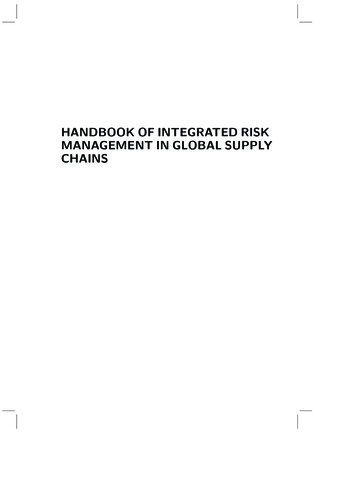Lecture 2: Hazard, Risk, Mitigation, And Preparedness
Lecture 2: Hazard, Risk, Mitigation, and PreparednessKey Questions1. What defines a hazard?2. How does “risk” relate to a hazard?3. What amplifies ones perception of the risk of a hazard?4. How is risk assessed?5. What class of population is typically more vulnerable to natural hazards?6. What mitigation methods are used to lower the risk of hazard effects?7. What preparedness techniques are used to lower risks?Pakistan flood, July 2010
Hazard – event causing damageRisk – probability and lossMitigation – reduction of risk
Hazard is process or event with the potential to createa loss of lives, material, or property.
What hazards were you exposed to this past weekend?
Hazardous sports
Hazardous jobs
Hazardous industries
Natural Hazards: Fires
Natural Hazards: Weather
Natural Hazards: Astronomical
landslidesNatural Hazards: Geologicalearthquakesvolcanic eruptionsfloods
Many geologic hazards have some common features
Many geologic hazards have some common features1) Warning time is normally short
Many geologic hazards have some common features1) Warning time is normally short2) Most of the direct losses aresuffered shortly after the event
Many geologic hazards have some common features1) Warning time is normally short2) Most of the direct losses are suffered shortlyafter the event3) Exposure to the hazard is largely involuntary
Table 5.1
Risk is the exposure of something of human value(life, health, property) to a hazard.
low risk in a big shiphigher risk in a small boathazard is cold water and big waves
As a group of four, rate the risk level from 1-to-10 foreach situation.Trail stream crossingTexting while driving
Risk perception varies greatly with individuals
Risk perception varies greatly with individuals Age Sex Occupation Cultural background Personal experience Media attention
Rate the risk level from 1-to-10 of living inthis beach house on Brainbridge Island.
Rolling Bay, Brainbridge Island, 1997
Risk assessment is a measure of risk and includesthree distinct steps:1) Understanding the hazard (research and monitoring)2) Quantifying the probability of the event occurring3) Estimating the loss created by the event
Risk Matrix
Hazard mitigation is sustained action taken to reduceor eliminate long-term risk to people and their propertyfrom hazards.FEMA
Hazard Mitigation Strategies1) Understand the hazard and the risk (research,mapping, monitoring, recurrence statistics)2) Education – bridging scientists with government officials3) Establish “life line” maps4) Land-use planning (Critical Areas Ordinance)5) Engineering building codes6) Warning systems7) Insurance8) Emergency preparedness9) Emergency response
Mitigation can be difficult because the public can1) Misperceive the risk2) Choose to ignore the riskRolling Bay, Bainbridge Island, 1997
Lesser Developed Countries are most vulnerable togeologic hazards
Lesser Developed Countries are most vulnerable togeologic hazardsLesser Developed Countries1) High population densitiesWorld Population DensityMexico Cityhttp://farm1.static.flickr.com/24/45181212 f642cc839e.jpg
Lesser Developed Countries are most vulnerable togeologic hazards2) Inadequate housing
Lesser Developed Countries are most vulnerable togeologic hazards3) Little education about hazardsArmero, Colombia, destroyed by lahar on November 13, 1985.More than 23,000 people were killed.
Lesser Developed Countries are most vulnerable togeologic hazards4) Lack of warning systemsDART Locations2004 Indonesian tsunami
Lesser Developed Countries are most vulnerable togeologic hazards5) limited emergency response
Lesser Developed Countries are most vulnerable togeologic hazards6) Undeveloped relief efforts
Haiti Earthquake: Death toll is 250,000 to 300,000
Millions of Pakistaniswere affected by themonsoon floods thatbegan in July, 2010
2. How does "risk" relate to a hazard? 3. What amplifies ones perception of the risk of a hazard? 4. How is risk assessed? 5. What class of population is typically more vulnerable to natural hazards? 6. What mitigation methods are used to lower the risk of hazard effects? 7. What preparedness techniques are used to lower risks? Pakistan .
Introduction of Chemical Reaction Engineering Introduction about Chemical Engineering 0:31:15 0:31:09. Lecture 14 Lecture 15 Lecture 16 Lecture 17 Lecture 18 Lecture 19 Lecture 20 Lecture 21 Lecture 22 Lecture 23 Lecture 24 Lecture 25 Lecture 26 Lecture 27 Lecture 28 Lecture
Hydraulic Fracturing and Horizontal Directional Drilling FEMA Policy #302-094-03 BACKGROUND . This policy applies to all Hazard Mitigation Assistance (HMA) programs. HMA is comprised of the Hazard Mitigation Grant Program (HMGP), Pre-Disaster Mitigation (PDM) program, and the Flood Mitigation Assistance (FMA) program.
Lecture 1: A Beginner's Guide Lecture 2: Introduction to Programming Lecture 3: Introduction to C, structure of C programming Lecture 4: Elements of C Lecture 5: Variables, Statements, Expressions Lecture 6: Input-Output in C Lecture 7: Formatted Input-Output Lecture 8: Operators Lecture 9: Operators continued
a GHS hazard class and category. Signal Words: "Danger" or "Warning" are used to emphasize hazards and indicate the relative level of severity of the hazard, assigned to a GHS hazard class and category. Hazard Statements: Standard phrases assigned to a hazard class and category that describe the nature of the hazard.
1.5 Tactical Risk Decisions and Crisis Management 16 1.5.1 Risk preparation 17 1.5.2 Risk discovery 17 1.5.3 Risk recovery 18 1.6 Strategic Risk Mitigation 19 1.6.1 The value-maximizing level of risk mitigation (risk-neutral) 19 1.6.2 Strategic risk-return trade-o s for risk-averse managers 20 1.6.3 P
report presents the results of an independent study to assess the future savings from hazard mitigation activities. This study shows that money spent on reducing the risk of natural hazards is a sound investment. On average, a dollar spent by FEMA on hazard mitigation (actions to reduce disaster losses) saves the nation about 4 in future benefits. In addition, FEMA grants to mitigate the .
Local Mitigation Planning Handbook . is a tool for local governments to use in developing or updating a local hazard mitigation plan. The purpose of the . Handbook. is the following: 1. To provide guidance to local governments on developing or updating hazard mitigation plans to meet the requ
The Adventures of Tom Sawyer ADVANCED PLACEMENT TEACHING UNIT OBJECTIVES The Adventures of Tom Sawyer Objectives By the end of this Unit, the student will be able to: 1. identify the conventions of satire. 2. examine theories of humor. 3. analyze the narrative arc including character development, setting, plot, conflict, exposition, narrative persona, and point of view. 4. identify and analyze .























